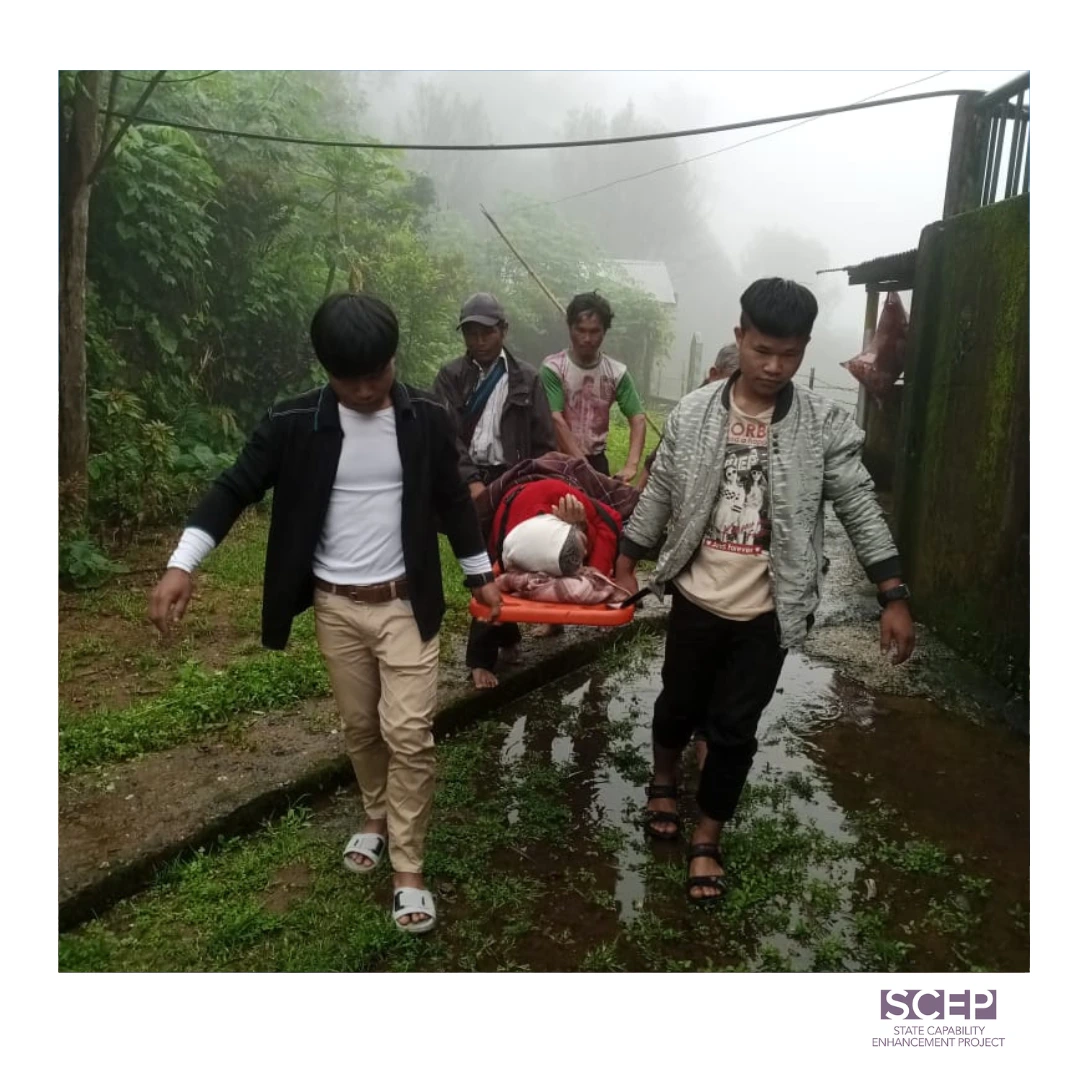In a remote corner of Meghalaya, where the rugged terrain often dictates the course of life, a remarkable act of unity and determination unfolded. The Village Health Council (VHC) of Mynriah village in Mawkynrew, East Khasi Hills District, a non-motorable and hard-to-reach area, united to save the life of an elderly woman suffering from severe hypertension.

The elderly woman, an 86-year-old whose condition had become critical due to hypertension, needed immediate medical attention. Mynriah, located two hours on foot from Mawkynrew, presents significant challenges due to its inaccessibility and the lack of motorable roads. Despite these obstacles, the VHC members of Mynriah, driven by compassion and a deep sense of responsibility, coordinated with the Primary Health Centre (PHC) in Mawkynrew to arrange for her transportation and medical care.
Equipped with a stretcher bed provided by National Health Mission (NHM), the community members set off on their arduous journey. Through dense forests and steep hills, they carried the elderly woman. Their mission was clear, to ensure that no distance or hardship would prevent her from receiving the care she urgently needed.

Upon arrival at the Mawkynrew PHC, the elderly woman was kept overnight for observation. She was then referred to the tertiary center, as she urgently needed specialized medical consultation and management in gynecology, medicine, and psychiatry. After long hours of dedicated care, the patient was stabilized and persuaded to undergo the necessary treatment at Ganesh Das Hospital.
Dr. Lamshuwa Mawlong, the active medical officer present at Mawkynrew PHC, praised the community members for their extraordinary efforts. “What we witnessed today is a powerful example of what can be achieved when a community comes together for a common goal. The determination and love displayed by the people of Mynriah are truly inspiring,” he said.
This incident not only highlights the challenges faced by remote villages in accessing healthcare but also underscores the importance of community-driven initiatives. The VHC of Mynriah has set a benchmark for other communities, demonstrating that no obstacle is insurmountable when people unite with a shared purpose.
Village Health Councils
Village Health Councils (VHCs) are the elected community institutions promoted by the Government of Meghalaya in February, 2022, as the nodal community institution which will “mobilize actions on health and nutrition issues, and serve a critical link between the state health systems and community members.”
They comprise of all the male and female heads of all households of a village. The transitional headman is the chairman and the VO President (SHG Federation at village level) as C–chair and is governed by an elected executive committee, consisting of one representative from every 10 households,. 50% of the seats of the executive committee are reserved for women. The local Accredited Social Health Activist (ASHA) and Anganwadi worker (AWW), are permanent members of the VHC. Teachers from local schools, Community Gender and Health Activists (CGHAs), and Auxiliary Nurse Midwives (ANMs) are to be part of the VHCs.
The purpose of VHCs is to generate demand for healthcare services within communities. According to a health department official, “the idea is to bring a sense of ownership among the people about solving problems that are often left unidentified or unaddressed.”